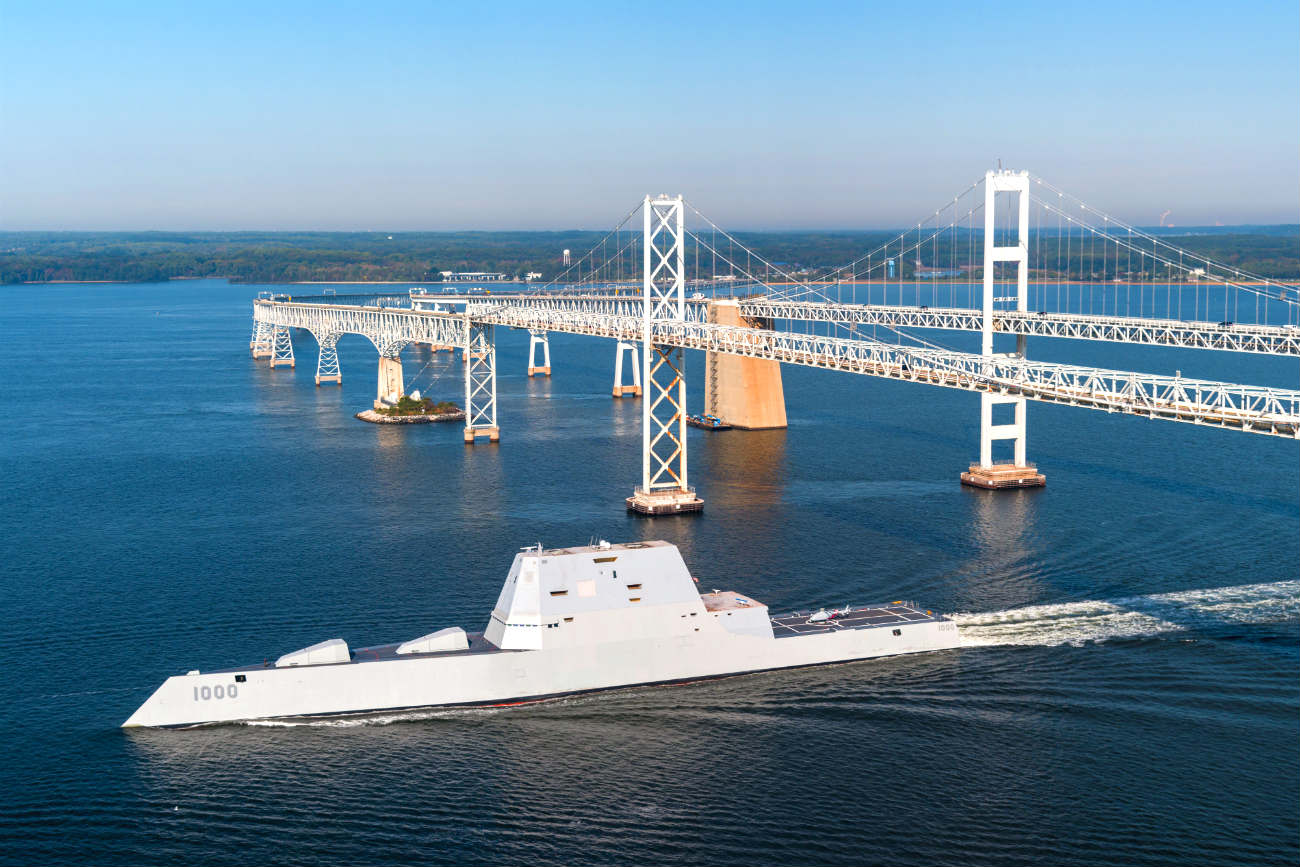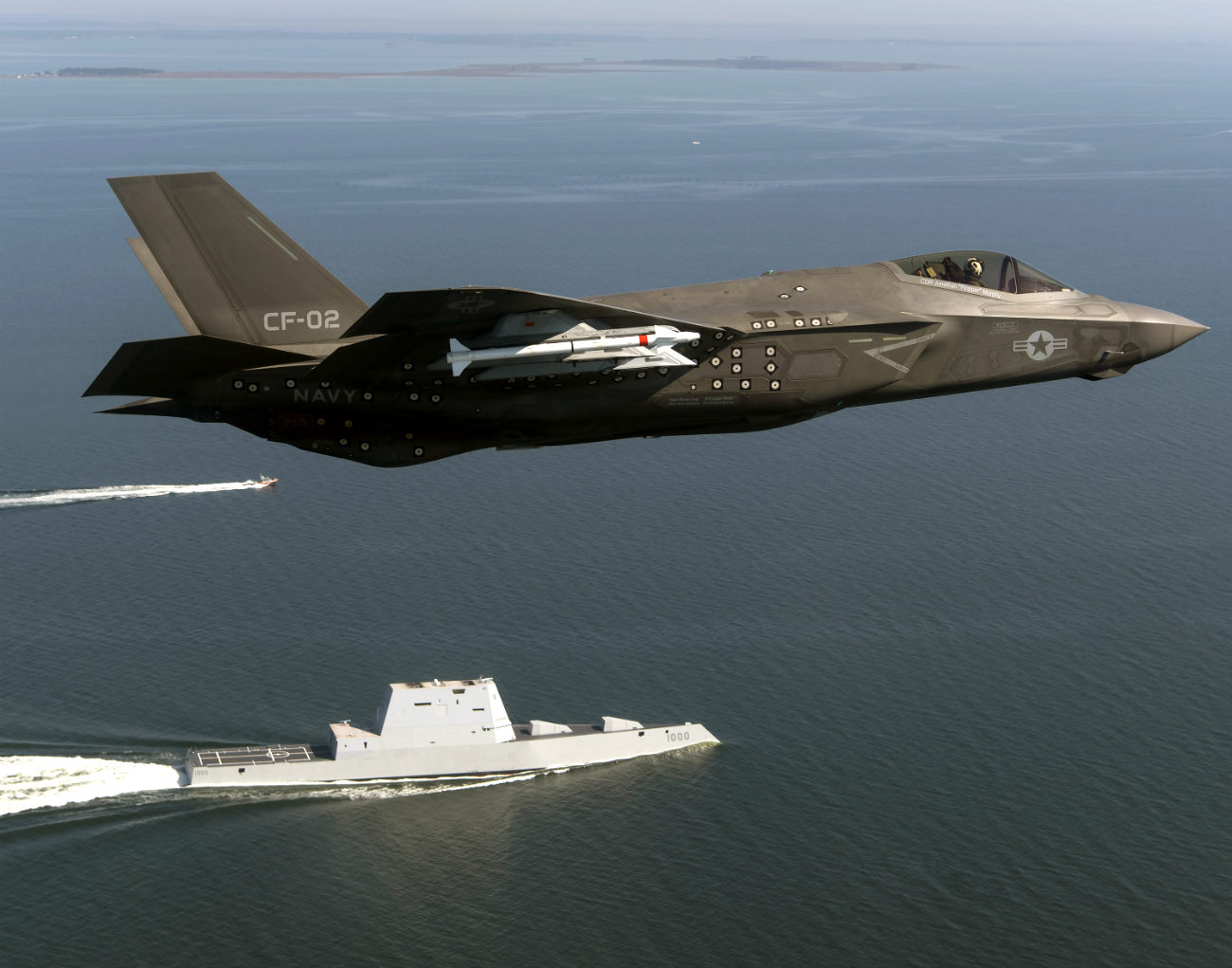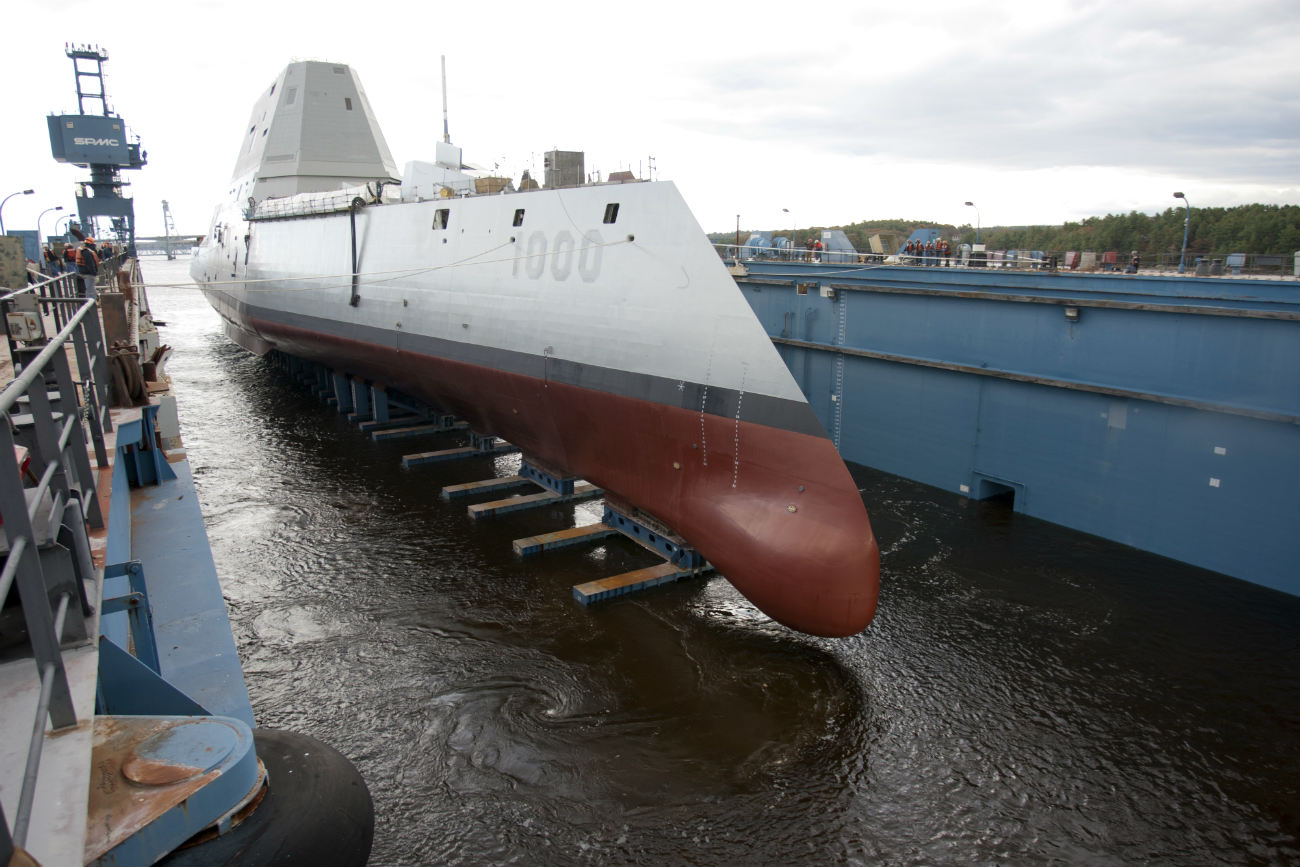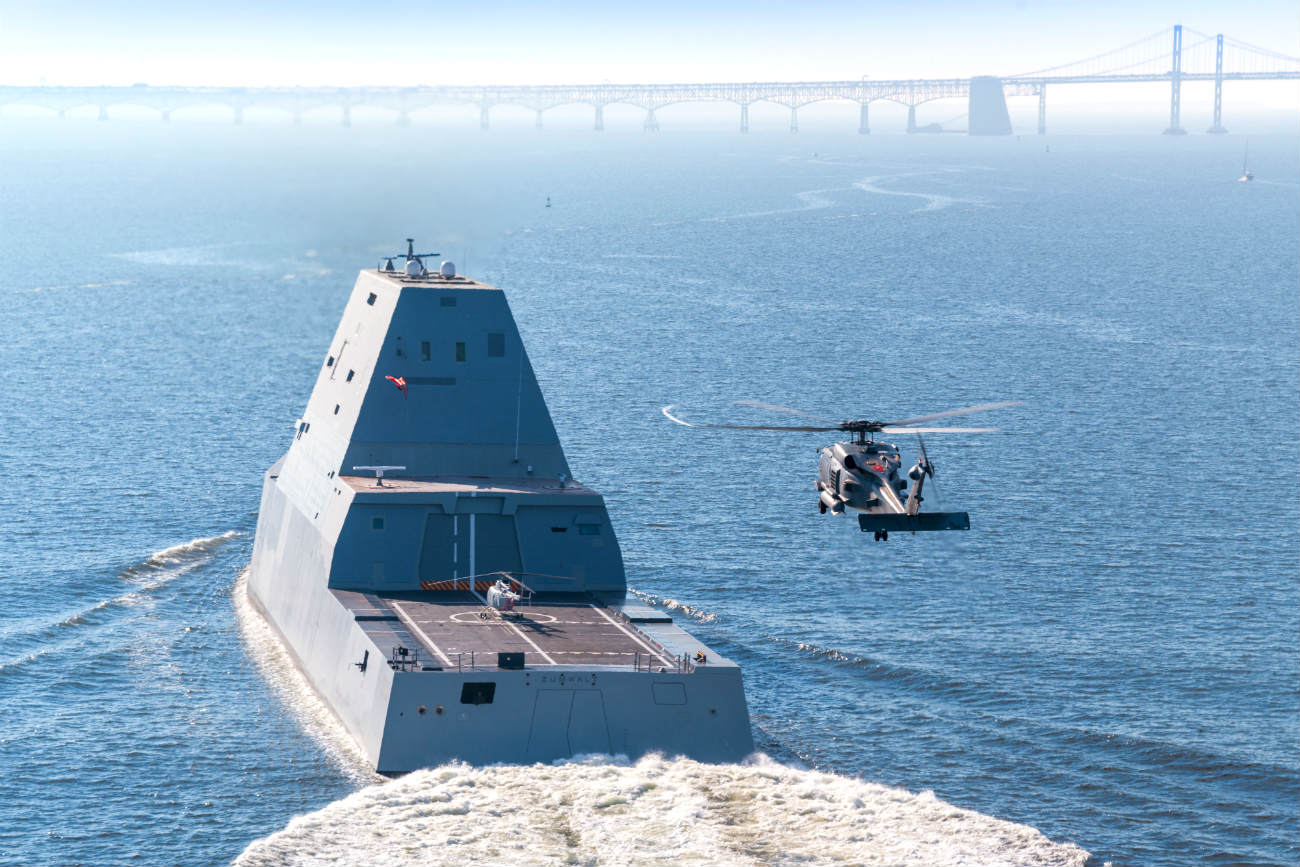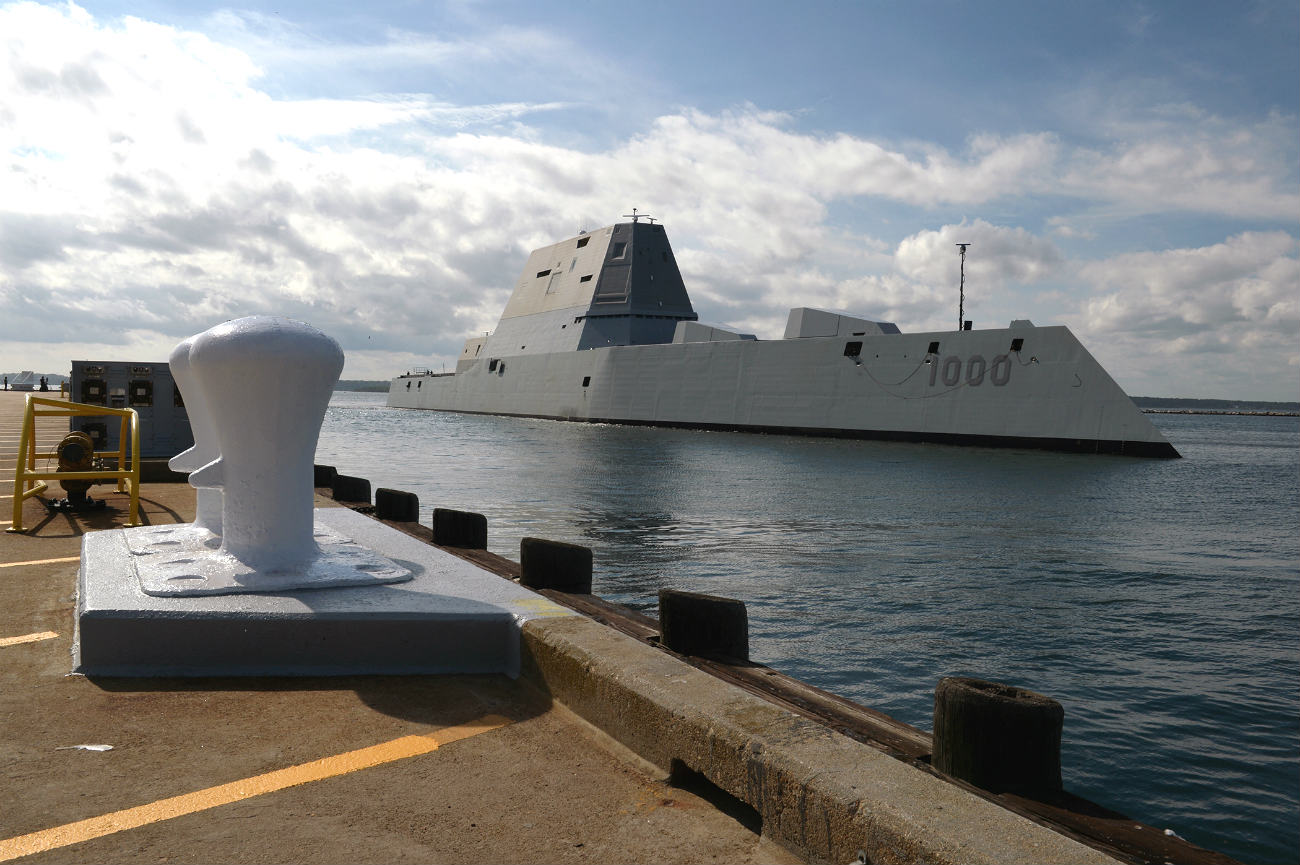The DDG-1000 Zumwalt is not just the latest addition to the US Navy’s fleet, it’s the first in a revolutionary new class of next-generation warships. These aren’t simply improved versions of existing destroyers, but true game-changers in the history of naval warfare. Or in the words of Admiral Harry B. Harris, commander of the US Pacific Command, “If Batman had a ship, it would be the USS Zumwalt.”
Stealth:
The most visible differences with the Zumwalt are its sharp angles and smooth surface. These features ensure that despite being 40% larger than a standard Arleigh Burke-class destroyer, the Zumwalt has a radar cross-section about the size of a fishing boat. Or in practical terms, about 50 times harder to spot on radar than a legacy destroyer.
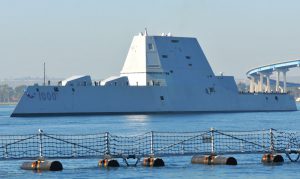
Which is only part of the ship’s stealth capability, since the designers were worried about concealing this vessel from many other sensor platforms. The Zumwalt’s acoustic signature, used by sonars and submarines to hone in on targets, is approximately as detectable as a super-quiet Los Angeles-class attack submarine. As an added bonus, water sleeting along the ship’s sides, along with passive cool air induction technology integrated into the hull, helps significantly reduce the destroyer’s infrared signature.
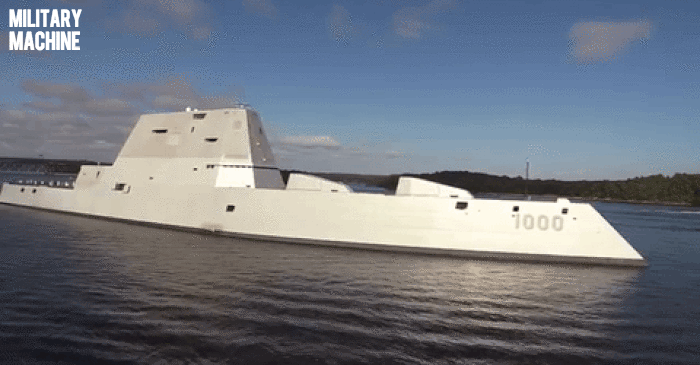 Advanced Weapons Integration:
Advanced Weapons Integration:
Unlike most modern destroyers, the Zumwalt is armed with not one but two long-range cannons, which makes these vessels the Navy’s premier fire support platform. These 6.1-inch (155 mm) Advanced Gun Systems (AGS) can fire regular shells or guided “mini-missiles” at an incredible burst rate of 10 per second, and with out to a range of more than 100 kilometers. All of which greatly exceeds the performance of land-based artillery systems of similar caliber.
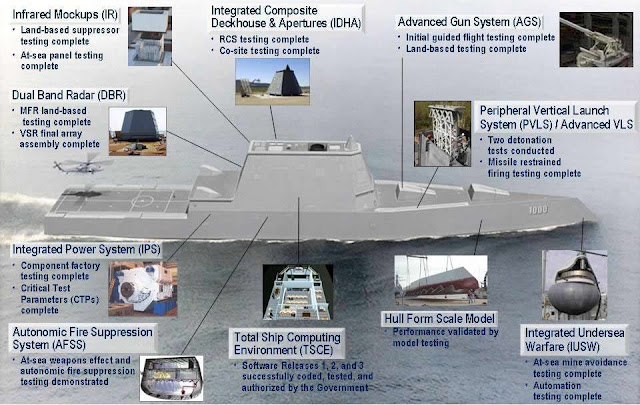
Defenses:
Curiously, the Zumwalt is also the only major warship in the US Navy not equipped with the 20mm Phalanx close-in weapon system (CIWS) for defending against incoming missiles. Instead, the destroyer’s secondary armament consists of a pair of 30 mm Mk 46 auto-cannons. These heavy weapons pack a bigger punch at longer ranges, ideal for defending against swarm attacks by light gunboats, but lack the ultra-high rate of fire to effectively shoot down anti-ship missiles. Nonetheless, the Navy appears confident that the Zumwalt’s stealth, electronic countermeasures and anti-air missiles can defend the ship against missile threats.
Powerplant:
These future weapon upgrades are made possible by the Zumwalt’s four Rolls-Royce turbine engines. This incredible powerplant can pump out 75 megawatts of electrical power—58 megawatts more than is currently needed for the ship’s system and propulsion. It’s also enough to power a small town, or hopefully exotic future railguns and laser systems.
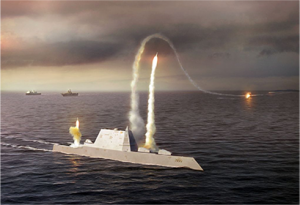
Firepower:
In the next few years, the Navy plans to replace one of the traditional cannons with an electromagnetic railgun. The current prototype gun fires 20kg shells at Mach 6 out to a range of 111 miles, but the production version is expected to have several times the range and kinetic energy. Besides the heavy long guns, the DDG-1000 has 80 vertical launch tubes installed. These can fire a wide variety weapons, including up to 360 anti-air, anti-ship, anti-submarine and ground attack missiles, depending on configuration.
Air Power Component:
Like all destroyers, this new system also boasts a helicopter landing zone and hangar, tucked away in the rear. The flight deck is even large enough to accommodate the F-35 or CV-22 Osprey tilt-rotor aircraft.
Electronics:
Thanks to the extensive use of automation, both in software and hardware, this hi-tech ship can be handled with a crew of only 180. Quite a feat for a 16,000 ton warship designed with so many different capabilities crammed inside.

Cost:
In fact, the Zumwalt might be considered a victim of its own success. With so many features added onto the DDG-1000 series, the price tag has skyrocketed to almost $4 billion per ship… at the exact time the Navy is looking to cut costs whenever possible.
Consequently, the Navy has been slashing their target number of ships to buy from 32 as originally planned, to just three today. As of April 2016, the program’s total cost stood at $22.5 billion, or $7.5 billion per next-generation warship. The hope remains that all the survivability features will be enough to ensure the Navy never has to buy another one.
Now see more compelling images of the Zumwalt Stealth Destroyer.
See USS Zumwalt Specifications
| Crew: 158 |
| Length: 610 feet |
| Beam: 80.7 feet |
| Displacement: 15,656 long tons |
| Speed: 30kts |
| Launched: October 28, 2013 |
| Christened: April 12, 2014 |
| Builder: General Dynamics Bath Iron Works |
| Armament: (80) Advanced Vertical Launch (AVLS) cells for Tomahawk, ESSM, Standard Missile; (2) Advanced Gun System (AGS) 155 mm guns; Long-Range Land Attack Projectiles (LRLAP) 155 mm rounds; (2) MK 46 Close In Guns (CIGS) |
| Aircraft: (2) MH60R or (1) MH60R and (3) Fire Scout VTUAVs |
